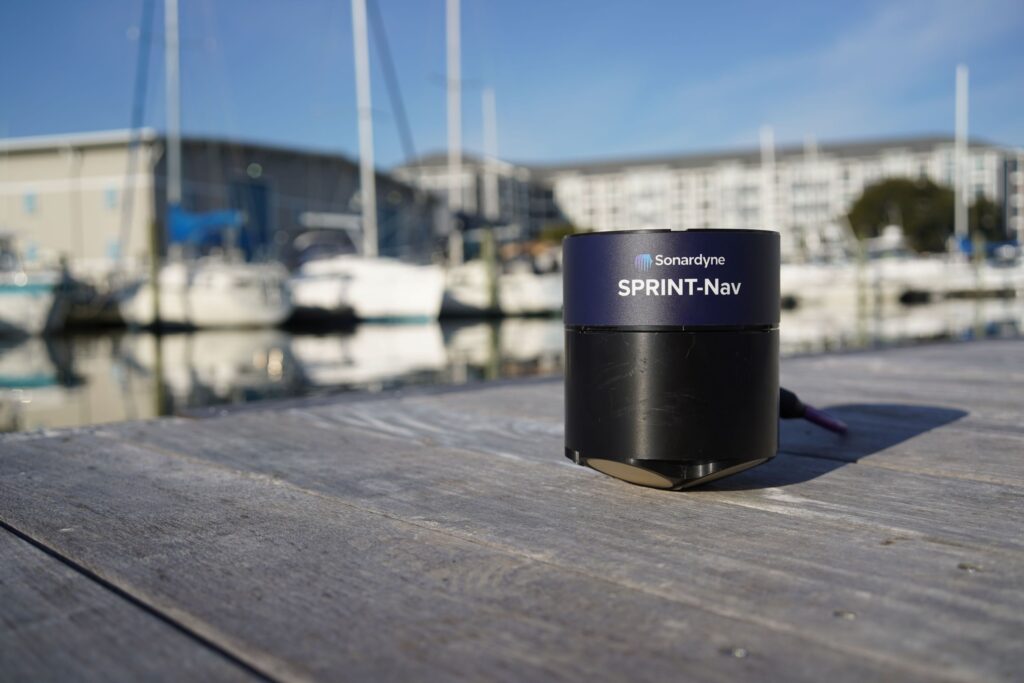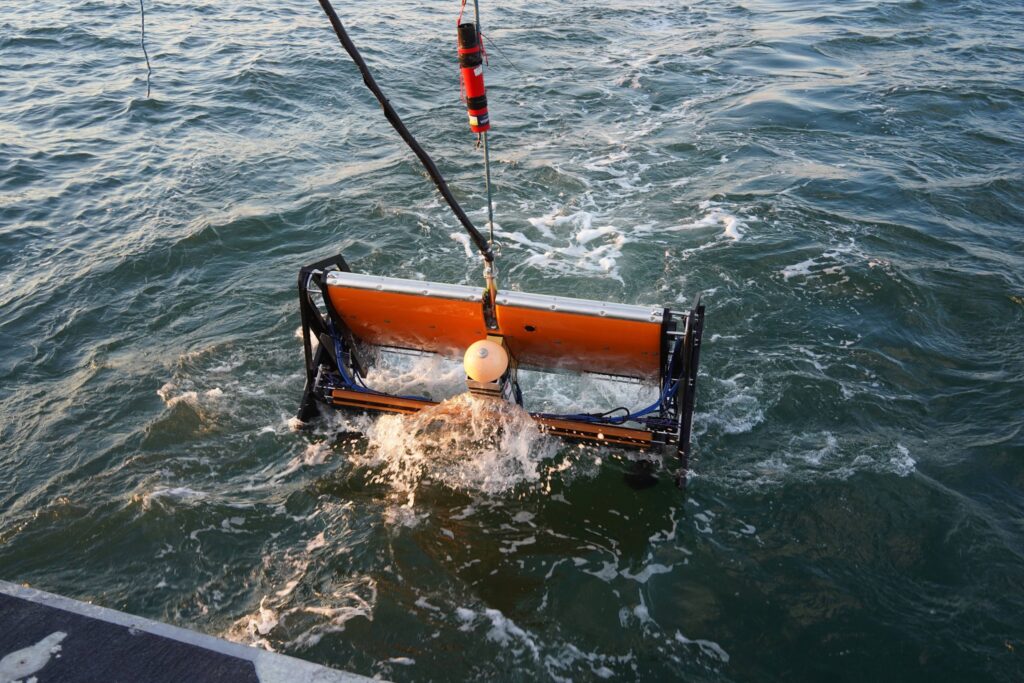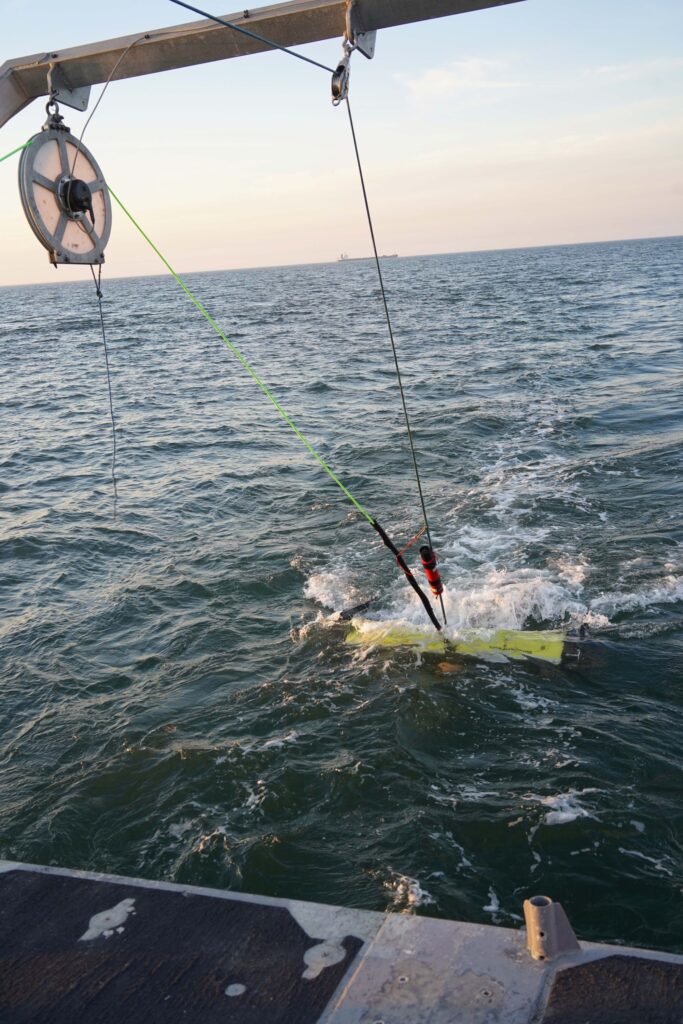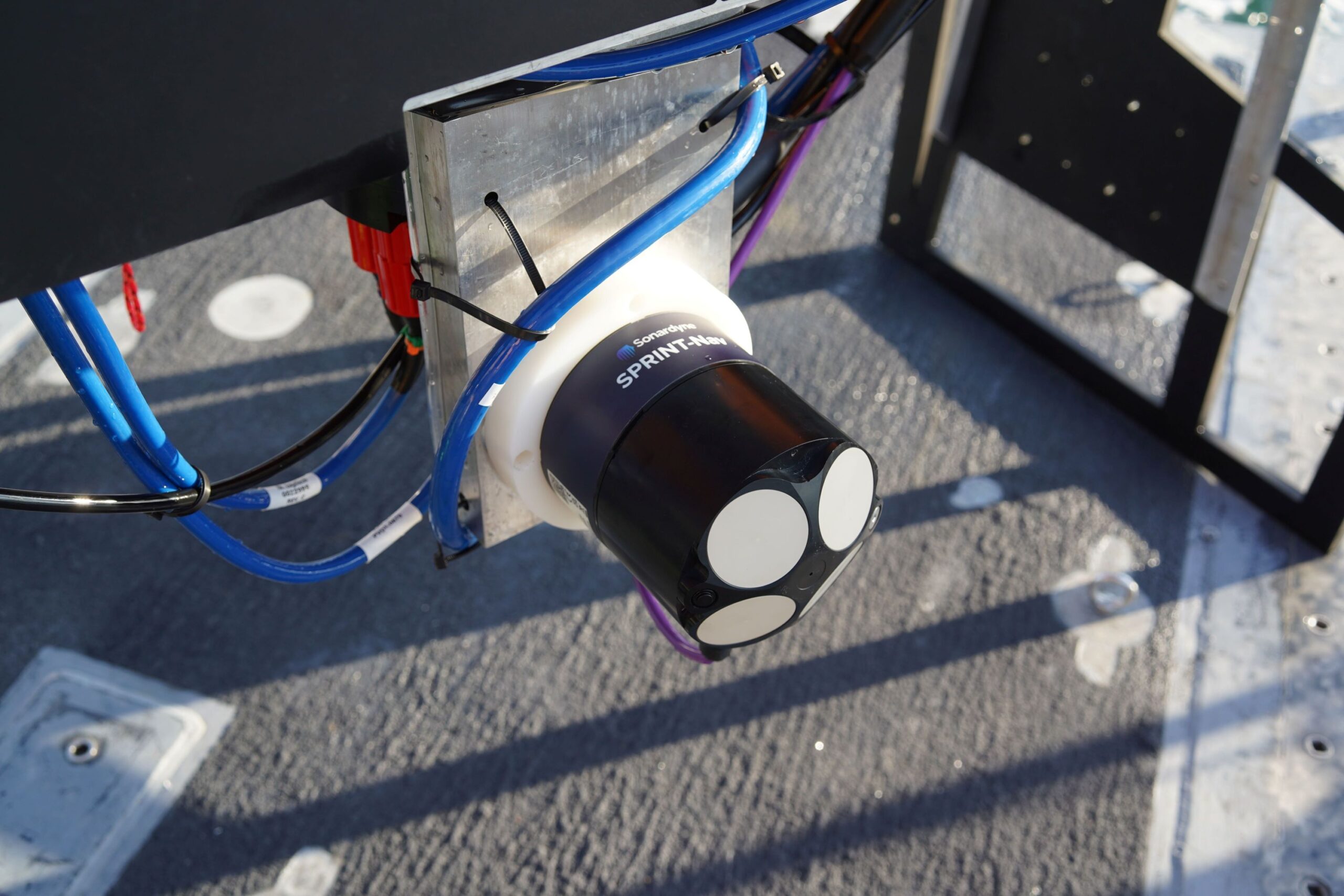The drive towards greener offshore energy generation begins well before the first wind turbine blade turns. Geophysical marine survey company Sulmara are innovating the way they work with the offshore energy sector, leveraging technology wherever possible to help offshore wind projects be developed in the most efficient and environmentally sound ways possible. Founded in 2019, they are an international services provider specialising in site investigation, construction support, subsea survey and inspection across the offshore energy and utilities sectors.
The challenge
With a focus on unexploded ordnance (UXO), boulder and linear infrastructure mapping, Sulmara are pushing the boundaries of technologies to deliver depth of burial surveys and identify obstacles in and around potential offshore development sites across the energy sector.
By integrating an ROTV with an Edgetech Buried Object Sonar System (eBOSS) and Micro-Fabricated Atomic Magnetometers (MFAMs) from Geometrics and then layering custom software and delivery packages on top, Sulmara have developed a technology stack capable of enhancing site investigation and asset inspection campaigns. To deliver high quality data with the system that is deployable from a range of vessels and subsea vehicles, Sulmara required very high accuracy positioning and navigation inputs. They were also looking for a way to lighten the payload for towed operations. Sulmara approached Sonardyne as a world-leading supplier of acoustic positioning and hybrid inertial-acoustic navigation technologies to help them rise to this challenge.
The solution
In February 2025, as part of their continuing commitment to pre-commercialisation development, Sulmara mobilised a vessel and survey setup in Norfolk, Virginia USA to perform various trials and data acquisition tasks with a range of sensor equipment. The integrated eBOSS, MFAMs, and ROTV were mobilised and extensively trialled over a range of seabed conditions. For a positioning solution to support the towed platform, Sulmara selected Sonardyne’s Mini Ranger 2 USBL system.
For navigation, Sulmara had opted for an integrated Sonardyne SPRINT-Nav Mini hybrid inertial-acoustic navigator, and they were happy with the navigation performance provided. However, in their drive to make their technologies more compact, any savings on size, weight and power were considered, and Sonardyne sent out members of their engineering team with a prototype of the SPRINT-Nav U hybrid inertial-acoustic navigator to work with Sulmara and utilise this new smaller, lighter and lower powered navigator to the test on the towed platform.

Small, light, precise
Measuring just 134 mm in height, 114 mm in diameter and weighing a mere 600 grams in water, SPRINT-Nav U is the world’s smallest hybrid acoustic-inertial navigator.
Its small form factor packs the full, trusted, SPRINT-Nav capability into a space traditionally filled by just a DVL on a small robotic platform to deliver USBL aided performance up to 4x better than standard, with just 8W of power consumption. SPRINT-Nav U is simple to integrate into any marine vehicle along with other payload sensors and uses same field-proven web user interface found on the SPRINT-Nav Mini. Pre-calibration in the factory also means it’s incredibly quick to set up and deploy on site. An alignment time of as little as five minutes, compared to the standard 15-20 minutes of other gyro compassing inertial navigation systems, also makes it the world’s fastest aligning hybrid navigator.
“The all-in-one and compact nature of SPRINT-Nav Mini and SPRINT-Nav U make them ideal for integration into towfish platforms. Towfish are currently positioned either using magnetic heading sensors or course made good, which may lead to large positioning and heading errors. Affecting both data at nadir and at the edge of a sonar swath. The combination of high-grade fibre optic gyro based IMU and DVL means that our small SPRINT-Nav products provide class leading navigation inputs into the wider towfish system, ensuring reliable data outputs and eliminating any need to re-run lines because of poor navigation.” John Houlder, Senior Product Manager, Sonardyne.
When paired with a Sonardyne Ranger 2 USBL system, in Sulmara’s case the Mini-Ranger 2, the combination of precision navigation and positioning, is second to none.
As our mainstay USBL system for nearshore operations, Mini-Ranger 2 is a tracking, positioning, and communications system with robotic capability that tracks up to 995m out of the box, expandable to 4,000m with an extension pack. It’s suitable for AUVs, divers, ROVs, towfish, USVs, and vessels in shallow to mid-depth waters and features a large array with excellent rear noise blocking, making it ideal for quick vessel mobilisations and long layback tracking in towed surveys.

The results
The combination of Sonardyne Mini Ranger 2 USBL with the new SPRINT-Nav U hybrid inertial-acoustic navigator gave the towed platform a heading accuracy of 0.15°. This was well within the required performance for the geophysical survey specifications that Sulmara are looking to achieve for their clients. Due to the need for location of ferrous materials, such as UXO, having the fibre optic gyrocompass (FOG) inertial measurement unit (IMU) within the SPRINT-Nav U meant that the navigation performance was not compromised in the same way that it would be if the ROTV was using a magnetic heading sensor or course made good for navigation.
“The introduction of the SPRINT-Nav U as a navigation solution for our towed platform provides us with a solution that is not only accurate and reliable in all environments, it also ensured high quality geophysical datasets. It’s low power, size and weight meets our requirement to provide increased manoeuvrability on the ROTV. Pairing the navigation capabilities of SPRINT-Nav U with the Mini-Ranger 2 gives us a great option, as having this one vendor solution means that integration is simplified. The use of a fibre optic gyro is also key; this stops our heading being impacted by any nearby magnetic fields.” Dennis Wilson, Development Scientist, Sulmara.

“Having integrated SPRINT-Nav Mini and SPRINT-Nav U, we’ve been really impressed with the performance of both navigators. The performance of SPRINT-Nav U is really striking for equipment with such a small form factor. This is something we value at Sulmara, as we’re always seeking efficient hardware options to support our innovative survey efforts. We’re increasing the adoption of uncrewed and remote technologies, and it is essential that we do not compromise on the quality of the data we collect when reducing the size of the payload. Having the power of Sonardyne’s SPRINT-Nav products paired with their Mini-Ranger 2 USBL available to deliver guidance for our ROTV operations gives us the reliability needed.” Dennis Wilson, Development Scientist, Sulmara.
If you have a similar challenge in your small robotic platform operations, talk to us about how we might help you to find the solution. Click on the link below and let’s start a conversation…
